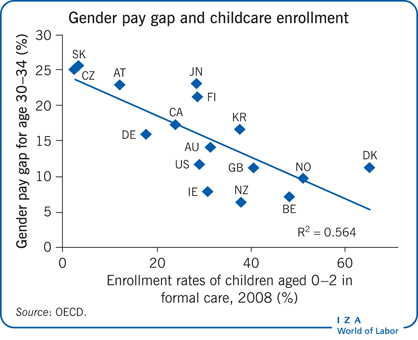Elevator pitch
Despite equal pay legislation dating back 50 years, American women still earn 22% less than their male counterparts. In the UK, with its Equal Pay Act of 1970, and France, which legislated in 1972, the gap is 21% and 17% respectively, and in Australia it remains around 17%. Interestingly, the gender pay gap is relatively small for the young but increases as men and women grow older. Similarly, it is large when comparing married men and women, but smaller for singles. Just what can explain these wage patterns? And what can governments do to speed up wage convergence to close the gender pay gap? Clearly, the gender pay gap continues to be an important policy issue.

Key findings
Pros
Policies promoting greater day care utilization reduce the male–female wage gap.
Policies aimed at increasing women’s lifetime work can reduce the gender wage gap.
The gender wage gap is smallest (2.8%) between single men and single women.
The gender wage gap is decreasing in most countries.
Cons
Audit studies designed to “catch” employers in the act find little evidence of gender discrimination.
Impact studies of the effects of antidiscrimination policies find little effect on reducing the gender wage gap.
The gender wage gap is largest (greater than 25%) between married men and married women with children.
Equal pay legislation may well be missing its target.